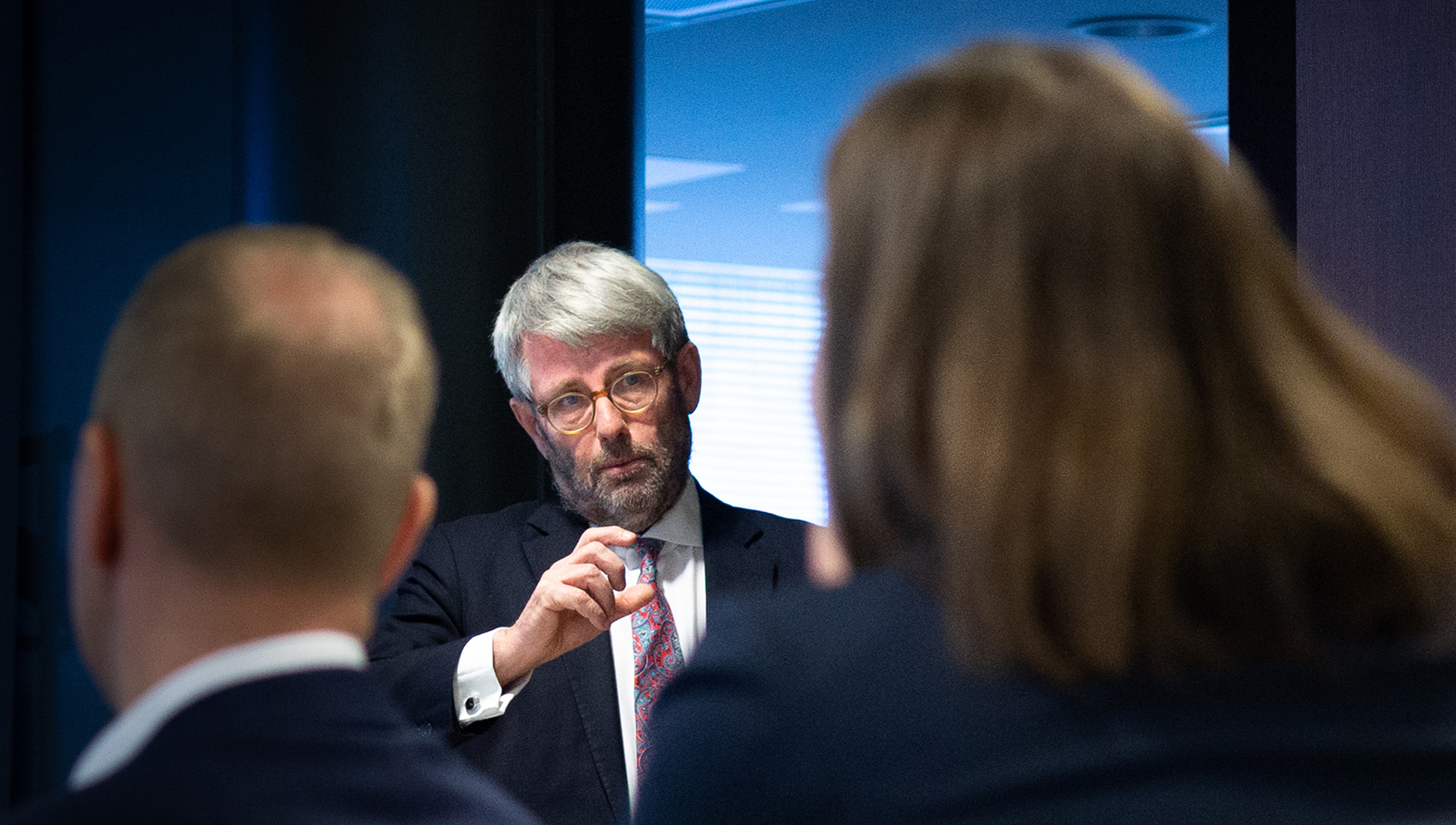Zero interest rates, pandemic fears and oil price wars aren’t making the job of an institutional investor any easier. Infrastructure is one asset class which may calm your worries.
In recent days the financial markets have been rocked by concerns over the coronavirus. The financial press has wondered how the public health crisis affects investors in equities, bonds and commodities, but how might it affect infrastructure as an investment?
- If anything, the situation with the coronavirus underscores the attractiveness of infrastructure as an investment class, says Tomas Franzen of the investment strategy and management firm Franzen Advisory. - Remember, infrastructure is a very long-term investment. It supports society and is not cyclical, so we don’t see wild price swings in infrastructure like you have in traditional assets.
Uncorrelated and non-cyclical returns are attractive
Infrastructure is the physical assets and systems that enable society to function. This is a diverse group of assets, ranging from bridges and power plants to hospitals and satellite networks.
- There are different types of infrastructure with different risk-return profiles, Franzen explains. - Some are debt-like investments while others are like stocks. An old brownfield toll road might be like fixed income, while a new desalination plant outside the OECD might have a risk-return profile similar to equities.
Infrastructure as an asset class is defined by its unique properties. These can include stable cash flows, inflation protection due to indexed contracts, returns via income instead of capital appreciation, a long investment horizon, and illiquidity. Infrastructure may also present a trait attractive in these volatile times: uncorrelated and non-cyclical returns offer diversification outside of the traditional asset classes.
Often, infrastructure has been considered a cousin to fixed income. Some types of infrastructure behave similarly, in that they have regular income and less volatility as equities. These include assets such as bridges, power grids or sewage systems.
In addition, since bond returns have declined in the era of zero interest rates, investors are looking for ways to boost their profits with riskier high-yield bonds or infrastructure investments with better returns.
- Some bond-like infrastructure investments can be considered as an alternative to fixed income investments. You get bond-like payments with hopefully an uptick in returns over time, Franzen explains. - However, infrastructure is illiquid and long-term, which makes it quite dissimilar to bonds.
How to invest?
Investing in infrastructure can be done directly or through intermediaries. There are infrastructure companies listed on stock exchanges, which makes investing a bit easier. Investing can also be done via an infra fund or fund-of-funds. Infra funds require relatively less capital, but they also add a new risk.
- You have a variety of risks when you invest in infrastructure, such as market, strategy drift, liquidity and political risks, says Franzen. - You also have manager selection risk if you buy funds. There is no simple index or ETF you can invest in to get an exposure to the infrastructure asset class.
Franzen refers to direct investment into infrastructure as the “Holy Grail” for investors, because it gives the most control and all of the profits. However, it is not for the squeamish, because it requires enormous sums of capital and finding the talent to manage the asset. It’s not exactly simple to run your own airport or rail line.
- Fund-of-funds might be better for smaller investors, but you need to pay attention to the fees. If you invest in a fund-of-funds, which does not diversify, you are paying an extra fee for no reward, he says. - When you invest in single funds you can control your diversification across infra categories. It is, however, worth noting that very few investors have the capital and knowledge required in order to be able to diversify through direct fund investments. Thus, fund-of-funds is a very good alternative for many investors to access this asset class.
“Infrastructure can definitely help your portfolio”
If an institutional investor decides infrastructure can be an option, the next challenge is deciding an appropriate allocation in her portfolio.
- Investors use techniques based on factors such as return and risk to determine the optimum mix of assets for their funds, says Franzen. - But generally, I would say infrastructure needs to be more than 5 per cent of your portfolio, or else it is too small to make a difference. I think 10-15 per cent could be reasonable, but the investor needs to consider illiquidity and what that could mean to his or her ability to rebalance her portfolio. Different investors have different tolerances for illiquidity.
In the past it has been difficult to appraise infrastructure returns because there has been no index or index tracking it. In this way, infrastructure was similar to Private Equity in earlier periods, but things are changing. Now investors have a new global index – EDHECinfra – which offers a representative, risk-adjusted view of the performance of investments in unlisted infrastructure. This will allow infrastructure investments to be judged against their peers, as well as giving investors the data necessary to make prudent decisions. In this way infrastructure is joining the ranks of respected asset classes.
- Infrastructure can definitely help your portfolio, but you need to do your homework to see how it could fit, Franzen concludes.Who?

Tomas Franzen
-
Founder of Franzen Advisory
-
Prior Chief Investment Strategist at the USD 40 Bn Second Swedish National Pension Fund (AP2)
-
Has also held a mixture of Board, Investment Committee and Advisory Board positions. He was the Chairman of Edhec-Risk Institute International Advisory Board, between 2013-2016
- Lives with his wife in Lisbon, Portugal and the archipelago of Gothenburg, Sweden.
Read also
Richard Wanamo - the man behind Evli’s new infrastructure fund
NB! Evli Infrastructure Fund is intended for professional investors and a limited number of non-professional clients who make an investment of at least EUR 100,000 and who are considered to have an adequate understanding of the fund and its investment activities.












